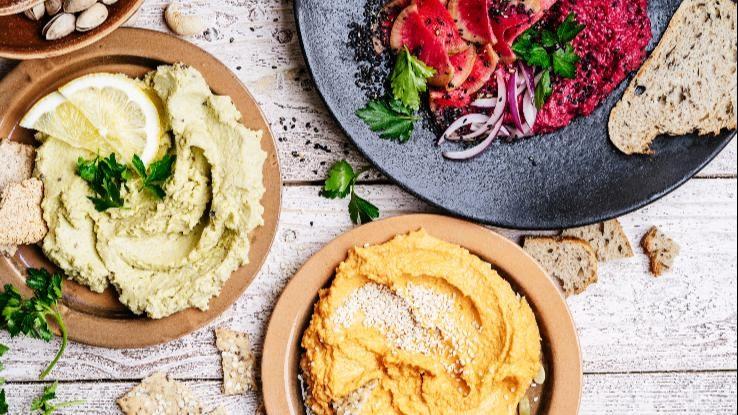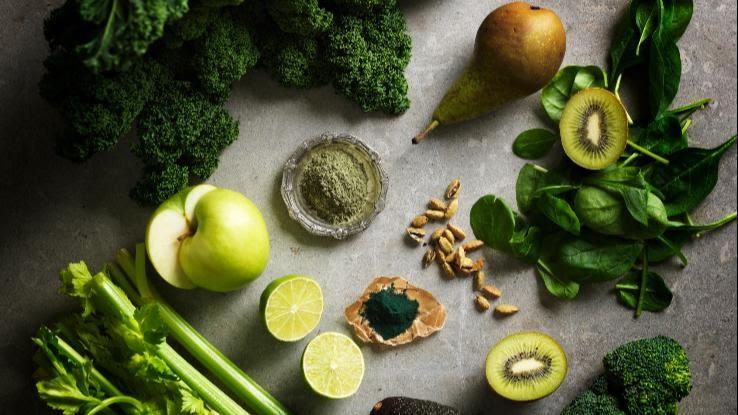
It’s no secret that two of the primary sources of protein are meat and fish. But what if you’re looking to diversify your diet and meal options beyond meat and fish? You don’t have to commit to a fully vegan or vegetarian lifestyle to be curious about expanding your culinary horizons. Fish and meat will always be available protein sources, but where else can you find this essential nutritional building block?
Why Is Protein Important?
There are many reasons why protein is “good for you,” whether you get it from meat and fish or one of these alternatives. That said, remember that any particular food’s nutritional value also depends on how you prepare it and what other foods you serve alongside it. Also, keep in mind that some high-protein foods may also be high in calories — here’s looking at you, almonds — meaning that you’ll have to balance your nutritional priorities.

As far as its benefits, protein helps you to feel full efficiently by reducing your hunger hormone level and boosting your peptide YY levels. Consuming lots of protein will also increase your strength and muscle mass. Contrary to some myths, protein is beneficial for your long-term bone health as well.
Eating foods with lots of protein can boost your metabolism and burn more calories than, for example, eating lots of carbohydrates. These factors are called the “thermic effect of food,” and protein delivers a much more impactful thermic effect than fat or carbs. People with high-protein diets have been shown to have lower blood pressure — 1.76 mm Hg lower systolic blood pressure and 1.15 mm Hg lower diastolic blood pressure. That’s a significant finding considering the well-established connection between high blood pressure and kidney disease, strokes and heart attacks.
Looking for a List of High Protein Snacks?
According to a May 2020 article called “The 25 Most Popular Snack Brands in America,” some of the most popular munchie-fighting foods in the U.S. include Oreo Cookies, Lay’s potato chips, Kit Kat chocolate bars, Ritz crackers, Reese’s peanut butter-and-chocolate combination, and all things Hershey’s. While all of these options may be incredibly tasty, how do they measure up when it comes to protein content? Perhaps unsurprisingly, the answers are less than flattering.

In your classic 13.7 oz box of Ritz crackers, you’ll find roughly 24 servings. One serving of those Ritz crackers will deliver one gram of protein, or approximately zero percent of your recommended daily protein consumption. What about Oreo cookies? A single serving of Oreo cookies is just one cookie, which will deliver roughly 0.7 g of protein.
If you’re looking for some healthier snacks with a lot more protein, rest assured that there are plenty. Here are some popular high-protein snacking alternatives to get you or your family through the hangriest parts of the day:
- Trail mix: With nearly infinite combinations of dried fruits and nuts, trail mix delivers approximately 8 g of protein in a single two-ounce serving. You can push that number even higher by choosing options with almonds and pistachios over options that feature lower-protein nuts like walnuts and cashews.
- Hard-boiled eggs: 6 g/egg
- The classic celery sticks and peanut butter combination:4 g/tbsp for just the peanut butter. (You can also mix it up by substituting apple slices for celery sticks.)
- Cheddar cheese slices: 7 g/slice
- Almonds: 6 g/ounce (approximately 22 to 24 almonds)
- Veggies with hummus: 4 g of protein in a 1/3 cup serving of hummus plus what you can find in the veggies. (Check out the list below for high-protein veggies. Broccoli and hummus look like a great option.)
- Pistachios: 5.97 g/ounce. An ounce of pistachios holds roughly 50 pistachios. (Shelling them is a workout, to be sure, but one that pays off with protein.)
Looking for High Protein Veggies?
Perhaps surprisingly, there are plenty of vegetable options that deliver significant protein benefits. In fact, broccoli offers up more protein on a per calorie basis than steak. Spinach, likewise, offers up approximately the same protein content per calorie as chicken and some fish.

In all fairness, however, calculating by the calorie can be a tad misleading. You’d have to eat a lot more broccoli and spinach than you would steak, chicken, or fish to achieve the same protein punch. But that doesn’t mean that vegetables can’t make a significant contribution to your daily protein intake.
So if you’re looking to up your protein intake with some healthy side, then check out the following high-protein vegetables (and legumes):
- Broccoli: 4.28 g/stalk
- Spinach: 0.7/g per cup (that will hold roughly 25 g of spinach)
- Lentils: 17.86 g/cup (boiled)
- Kale:4.3 g/100 g serving
- Beans of many varieties: pinto beans (15.41 g/cup); chickpeas or garbanzo beans (14.53 g/cup); mung beans (14.18 g/cup); fava beans (12.92 g/cup); and lima beans (11.58 g/cup)
- Edamame: 18.46 g/cup (frozen)
- Green peas: 8.58 g/cup
- Brussels sprouts: 5.64 g/cup
- Fresh corn:4.68 g/cob
- Potatoes: 4.55 g/medium baked potato
- Asparagus: 4.32 g/cup
So, what’s for supper tonight? How about a handful of almonds or a slice of cheese while you cook? Maybe some potato salad (with eggs, of course!), a few spears of asparagus, and a couple of stalks of broccoli? Or perhaps you’ll melt that cheese over some veggies? As you can see, you’ve got plenty of options that can help you reach your daily protein, all without ever setting foot in the meat or fish aisles.
Resource Links:
- “Effect of a high-protein breakfast on the postprandial ghrelin response” via National Library of Medicine
- “Dietary protein to maximize resistance training: a review and examination of protein spread and change theories” via National Library of Medicine
- “Dietary protein: an essential nutrient for bone health” via National Library of Medicine
- “The effects of high protein diets on thermogenesis, satiety and weight loss: a critical review” via National Library of Medicine
- “Dietary protein and blood pressure: a systematic review” via National Library of Medicine
- “The 25 Most Popular Snack Brands in America” via Eat This, Not That
- Oreo Cookie Nutritional Facts via Nabisco





